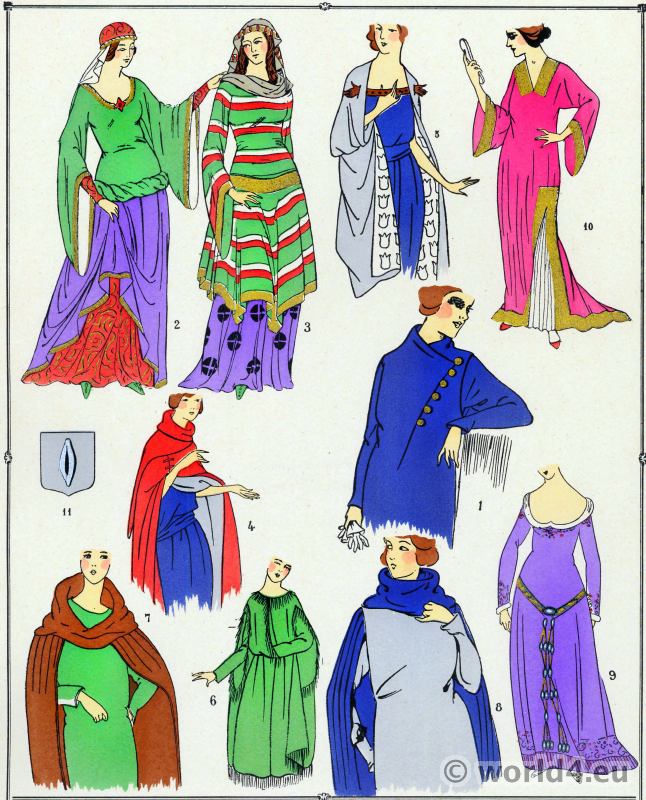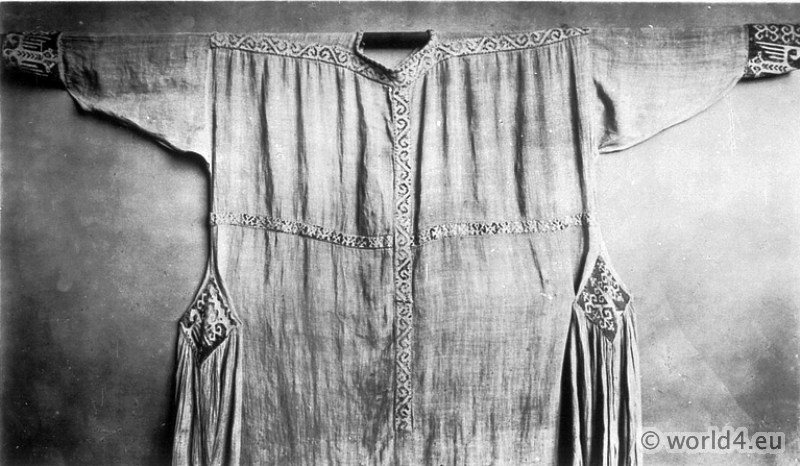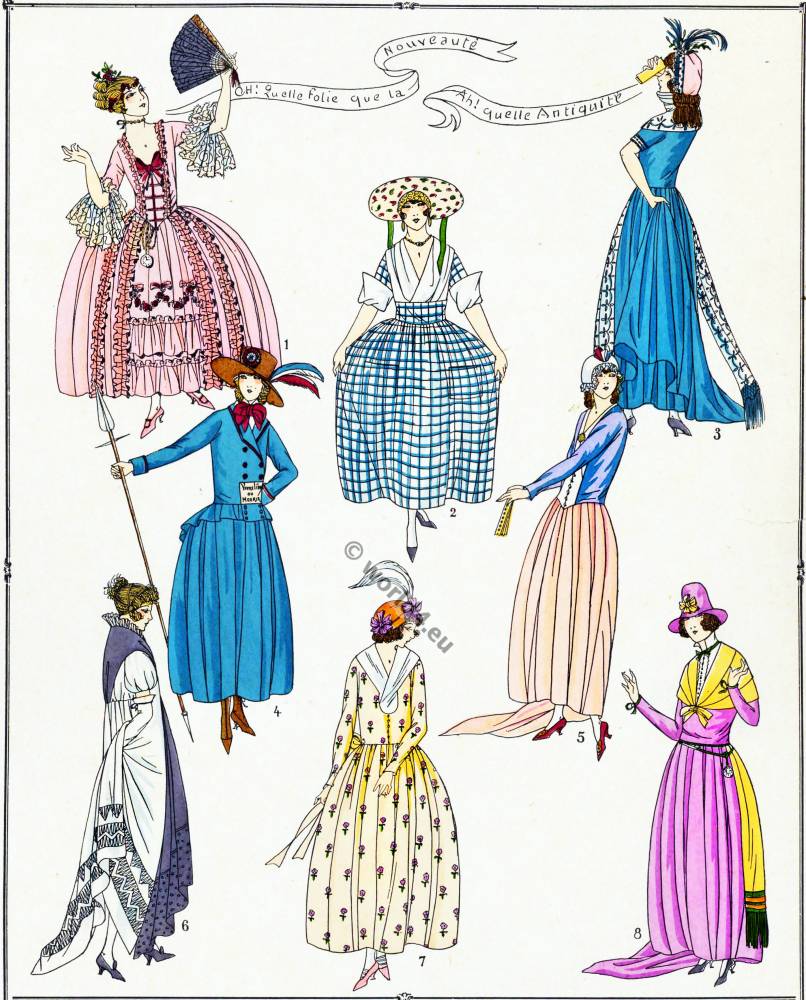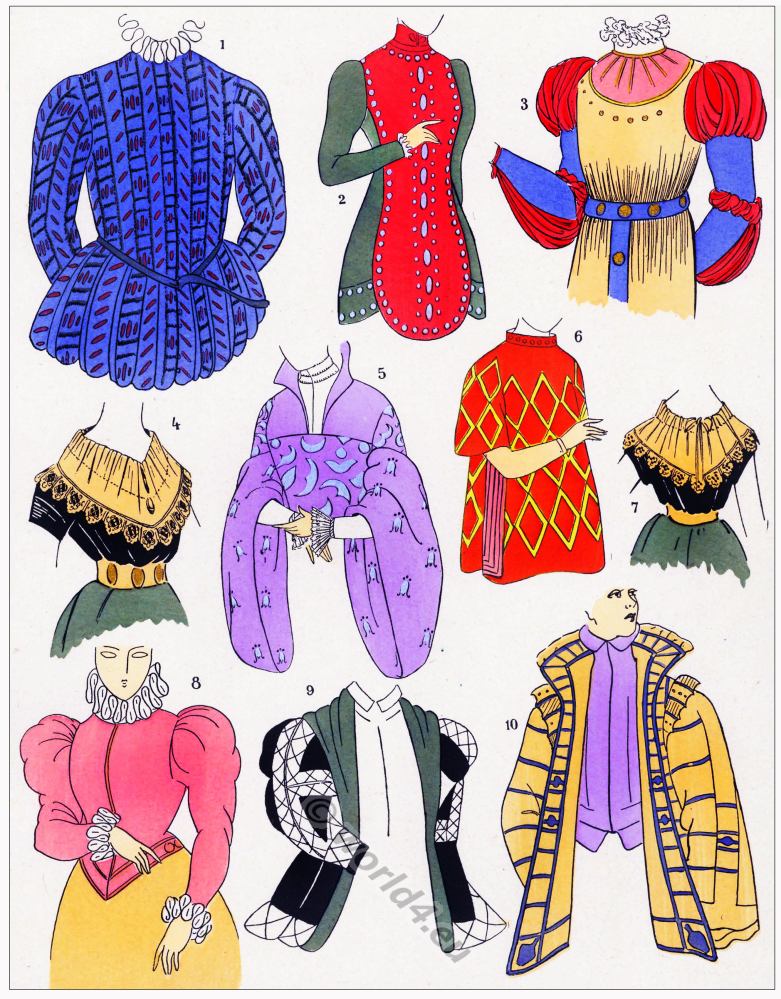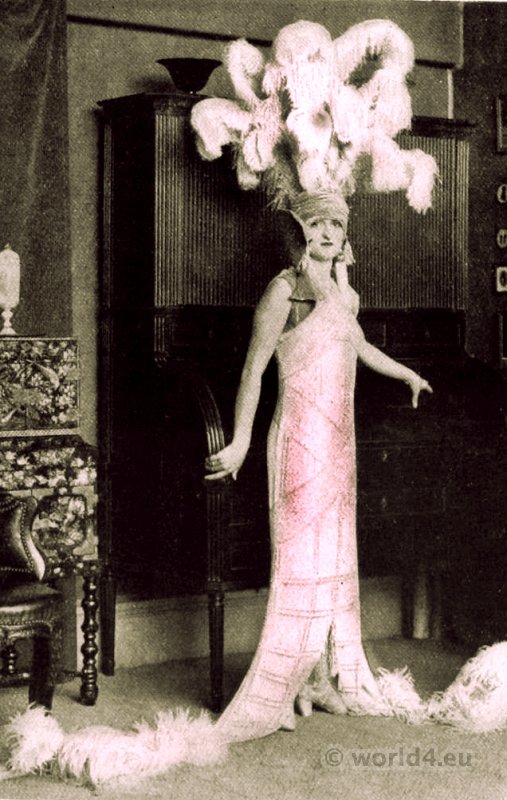L’histoire du costume féminin français. Les modes du Moyen Age, de l’an 1037 à l’an 1461. Robes. – Planche 2.
- Cotte hardie, Th. de Rousmer (1264). Larges emmanchures, Perse bleu foncé, boutons jaunes.
- Princesse (1000), robe verte, bordée d’un galon de passementerie or, la sous-jupe et la manche ajustée en brocart rouge ainsi que la coiffure également bordée d’un galon or, voile blanc.
- Dame noble (1100), robe rayée vert et rouge, ceinture d’or, sous-jupe violet avec motifs noirs. Voile châtaigne et pierreries.
- Houppelande avec chaperon (1372). Rouge, doublure gris perle. Robe bleue.
- Manteau d’Agnès de Méranie, gris doublé d’hermine, attache en cuir, robe violette (1223).
- Femme élégante sous Charles VIII (1483), franges de poil de chèvre comme garniture. Robe vert foncé.
- Pelicon, manteau d’après-midi Michelle Papelart, bourgeoise de Châlons (1258), teinte marron.
- Renaud de Saint Vincent (1260). Manteau à panneau devant. Capulet bleu, manteau gris.
- Noble dame sous Charlemagne (768). Robe violet clair, ceinture de joaillerie, broderies de couleur. Bordure de fourrure au décolleté et aux manches.
- Robe (1142), rose, broderie or, en dessous chemise blanche.
- Barmière armoiriée de la Communauté des marchands tisserands de la Ville de Paris fond bleu cobalt, navette blanche et noire.
Source: Les modes du Moyen Âge, de l’an 1037 à l’an 1461.

